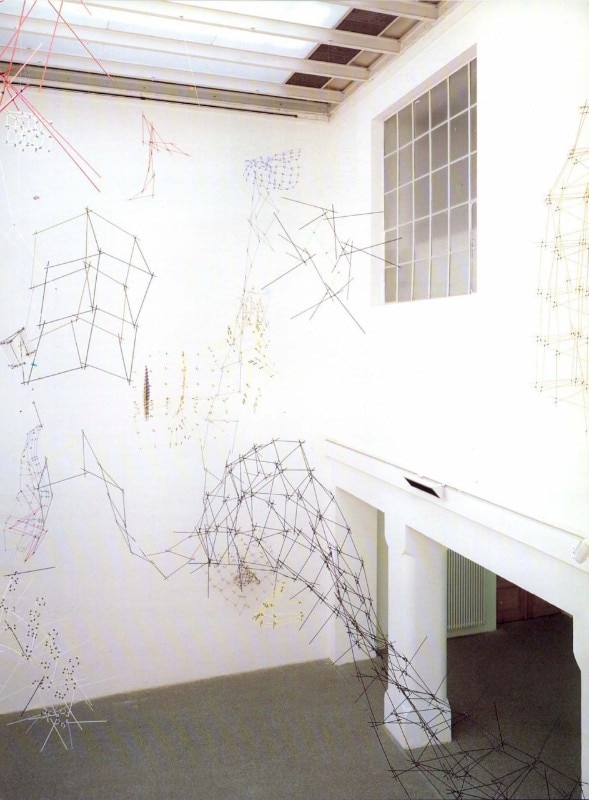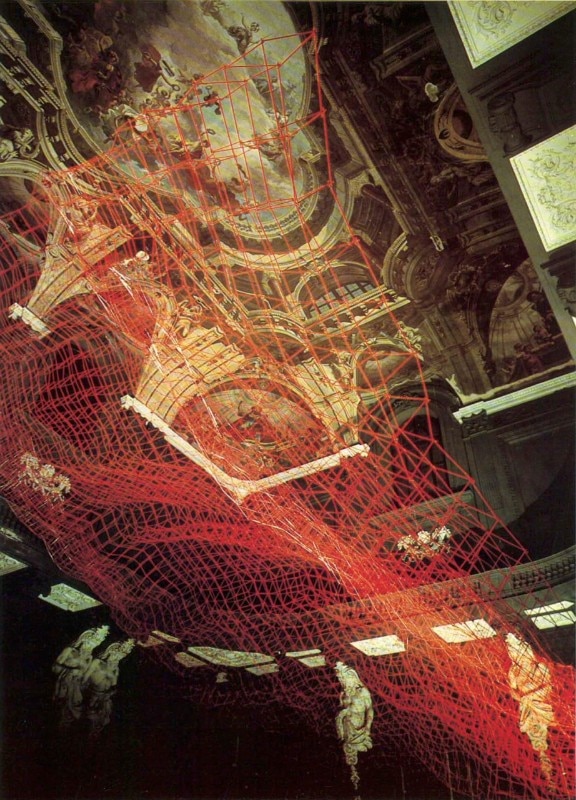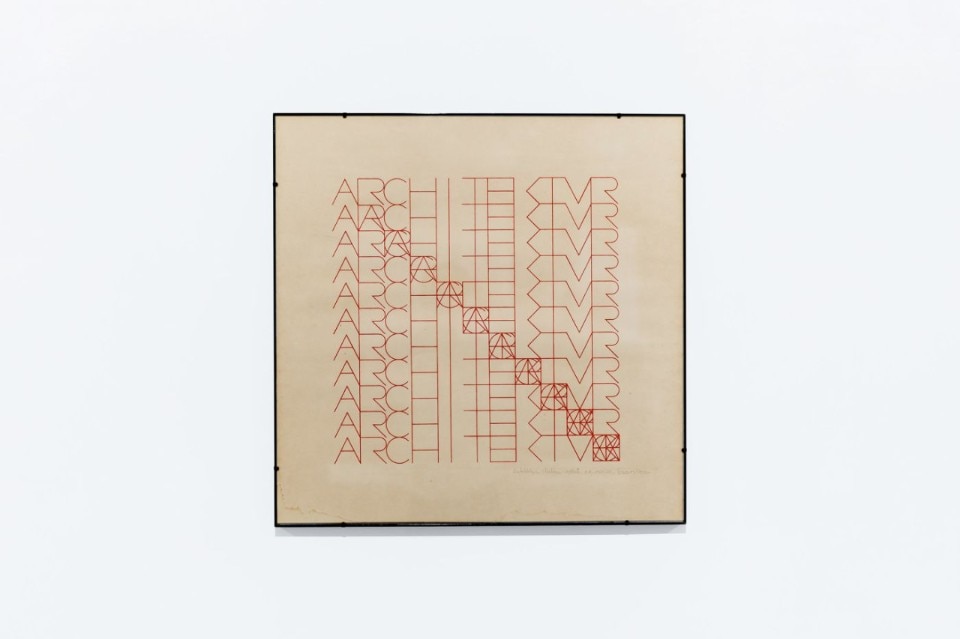I am in my childhood bedroom when I read about Leonardo Mosso’s passing. Around me I see objects whose stories I do not remember, austere furniture, and old exercise books. I pick up a random squared notebook, and I am convinced that I will find something in it – even though I am not sure what. Large colorful shapes interrupt whole pages of bars, numbers and rectangles. The pen strokes become more and more uncertain and imprecise as they move away from the example written by the teacher.
The fearful attention to following the lines is moving, but it is precisely the serious fun of creating those shapes that makes me understand why Leonardo Mosso brought me back to my prewriting exercises, and what must have struck me about his alphabets when I first saw them.

Alphabets have been a precious way for me to learn to trust the algorithms – they’re always of great help in creating utopian places, which today I feel are faded, if not lost, especially in times when online algorithms have become invasive and pervasive. It has therefore become a stimulus for me to investigate what has been a constant and daily exercise for Mosso since 1969, and which today we can try to interpret as the playful extension of his design and architectural research.
Every evening after work, and apparently also during the holidays, Leonardo Mosso devoted himself to inventing grammars and turning them into new geometries that could correspond to the letters of an alphabet. He created a large number of alphabets and gave them the form of ideograms, structure-scripts and alphabets with a square modulation created with a limited number of graphemes.
His aim, in perfect harmony with the semiotic culture of the late 1960s, was to return to the origins of communication – that is, to the sign, which preceded the word. And the way he managed to do this is inspired by structuralism, from which he inherited an absolute faith in structure as the generator of a system of transformation. In the algorithm, Mosso finds the possibility of creating space in endless ways, and inventing modular and replicable systems that become the utopian engines of a virtually infinite construction process.
The same confidence spreads from the living space of the square piece of sheet to that of his reticular jointed structures – research on architectural structures made of wood, aluminum and steel, with which to experiment with the infinite possibilities of connections within a supporting structure, and the potential repeatability in systems of structures.

The structures, however, are not anticipations of architectural forms, but rather structures of possibilities: “a system of transformations…from which infinite possibilities, messages and formal choices can be generated”, as Mosso describes them.
They invade space and transform it, making it transparent and affecting it in unpredictable ways. They remind me of the combinatory literature of Queneau, Perec and Calvino, as they have the same fidelity in following the rules one has given oneself, and the same overwhelming effect while handling simple elements. I find the same regularity of unpredictability in the Chiesa del Gesù Redentore in Turin, which Mosso designed in the late 1950s. Here, the modular geometries float on an underlying rhythm, the play of cross-references between patterns pulsates and becomes imposing, propulsive and cathartic.
Plunged right in the middle of the single nave, in the warmth of the brick facing that inspires meditation, I found in the play of the Gothic buttresses the same grammar of signs, the same syntax that, in this sacred dimension, translates into a strong desire for ascension.
Mosso’s is a spiritual brutalism, and the forms seem to propagate in a way that is as spontaneous as it is rigorous, as if a kaleidoscope was generating the symmetries. The enigmatic and complicit aspect of the request to discover the rules of the game in the construction of structures accompanies the entire production of Leonardo Mosso and emerges as the ultimate root of his thought and practice: digital in the gaze, analogical in the doing, open in the reading that can be given, and utopian in the development possibilities. Like a great cry, his works rise up like a prayer of supreme love towards the structure – like the constant writing of a latent utopia.
Mariacarla Molè graduated in philosophy of language and specialized in semiotics. Graduated from Campo corso per curatori at Fondazione Sandretto Re Rebaudengo, she has worked on editing curatorial texts and translating catalog texts. She collaborates with Flashart, Camera Austria and Il Manifesto, for reviews of exhibitions and essays on contemporary art.
Opening image: Leonardo Mosso, Architektur, 1972


